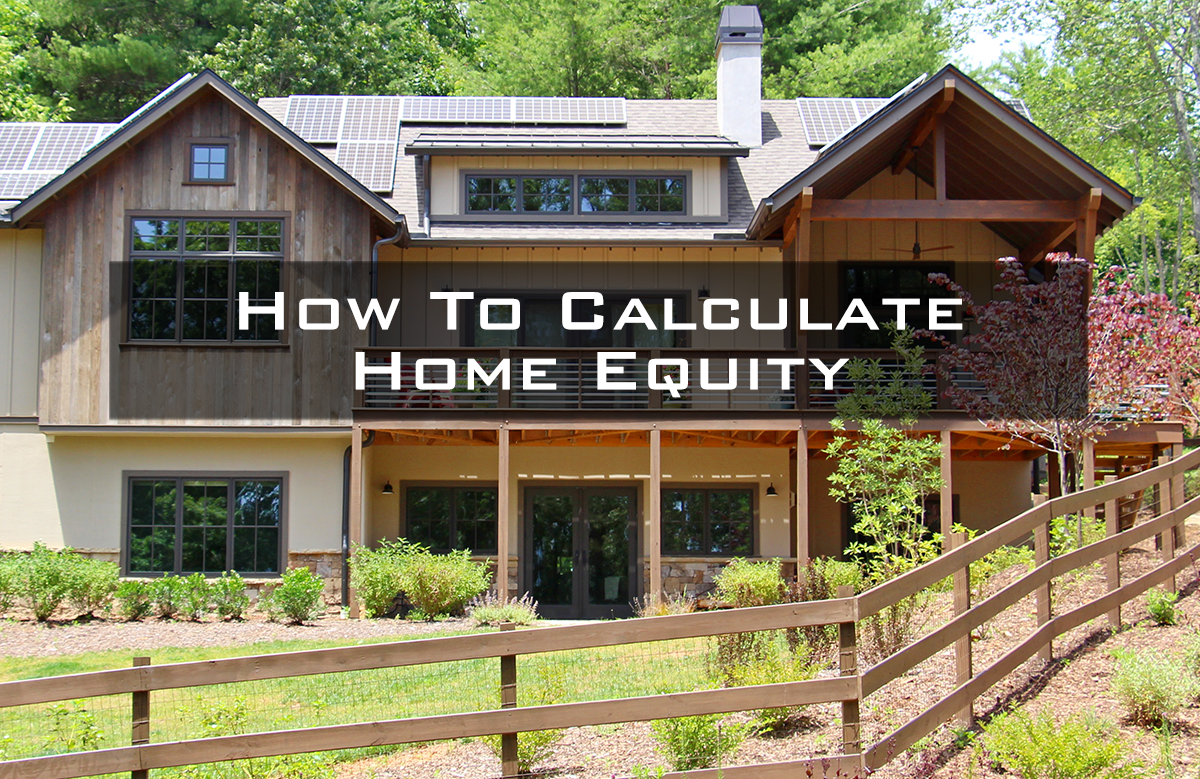As a homeowner, you may have wondered about how much equity you have, and whether you could leverage that equity to borrow money for home improvements or other expenses. It only takes a few calculations to determine your equity, and once you have a good understanding, you can confidently make decisions about applying for a home equity loan or line of credit (or decide if it’s time to sell). Read on to find out more about how to calculate your home equity percentage.
What is home equity?
Home equity is the difference between what you owe on your mortgage and your home’s market value. Imagine it this way: the bank owns part of your home, since you haven’t fully paid back your mortgage yet, but whatever amount you have paid back translates to how much equity you own. In simple terms, equity is how much of your home you have paid for or gained due to appreciation. When you first bought your house, your equity was the amount of your down payment. Once you have completely paid your mortgage, you will own 100% equity in your home.
How to Calculate Equity in Your Home
As previously mentioned, to calculate equity, subtract the amount you owe on your mortgage from how much your home is worth. The difference between what you owe and your home’s value is your equity.
The value of your home can be determined by an appraisal, which may have been required by your bank before they settled on the terms of your current mortgage. It’s important to have an appraisal value or a Comparative Market Analysis (CMA) in order to calculate equity correctly. If you have your home appraised again later on, the value might change depending on your home’s condition and any renovations you have done.
Keep in mind that the housing market will affect equity as well. If homes in your area increase in value across the board, your equity goes up. If home values decrease, your equity decreases.
Applying for a Home Equity Loan
You can apply for a home equity loan, which uses your house as collateral. Many homeowners use home equity loans for renovations or expansions, but these loans can be applied to any expenses you may be facing.
When you apply for a home equity loan, lenders will consider your loan-to-value ratio (LTV). An LTV is the amount of mortgage on a home compared with the value of the property. For example, if a buyer gets a $300,000 mortgage to buy a $600,000 home, their LTV is 50%, because their loan is worth 50% of the home’s value. You can calculate your own LTV by dividing your mortgage’s balance by your home’s value, then multiplying by 100 to get a percentage. Click here to find your LTV with NerdWallet’s home equity loan calculator.
Lenders look for low LTV ratios because the outstanding loan amount, compared to the value of the house, is low, and the buyer is considered to be a “safe bet.” A high LTV is seen as riskier by lenders because there is a chance the buyer could default on the loan.
The Asheville area boasts home styles and sizes for a range of budgets.
What is a good home equity percentage?
In order to determine how much money to loan you, a lender will look at your amount of equity along with your LTV ratio. To get the best loan terms, lenders are generally looking for an LTV of 80% or less, which means that your home equity is 20% or higher. In other words, you need to own 20% or more of your home’s total value in order to get a larger loan.
Home Equity Loan vs. Home Equity Line of Credit (HELOC)
As you consider using your equity to borrow money, keep in mind that you can choose a fixed-rate loan or a home equity line of credit. Here are the differences between them:
A home equity line of credit, or HELOC, allows you to borrow up to a set amount of money over a period of time, like a credit card. Once you make payments, you’re allowed to borrow more against the equity you own in the home. Most lenders require 15-20% equity, good credit, and a good debt-to-income ratio in order to issue a HELOC.
A fixed-rate home equity loan allows you to borrow a lump sum of money upfront and then pay it back over time. Your interest rate won’t go up, and your payments are fixed amounts that don’t change over the life of the loan.
There are various pros and cons for each of these options. Fixed-rate loans work well for homeowners who want a one-time lump sum, while HELOCs work for homeowners who may need to borrow more after their first amount has been used. As you consider a fixed-rate loan versus a HELOC, it’s important to remember that your home is the collateral, so you can get foreclosed on if you miss payments. Your house can also go down in value after you borrow against the equity, which can make it hard to get another loan in the future because your LTV is too high.
Remodeling or even DIY projects around your home can increase its market value and boost your equity.
How to Increase Your Equity
To increase your equity, focus on paying down the principal of your loan – the amount you owe toward your home before taxes, interest, and other fees – and lowering your LTV ratio. This will show lenders that you’re a safe bet for a loan. If you can, increase your monthly payments to chip away at your balance more quickly. While this is easier said than done, even a small addition to your monthly payment amount can help you build equity faster.
You can also consider refinancing your home with shorter loan terms. This will allow for more of your monthly payment to go towards the principal of your mortgage, and you may also secure lower interest rates. For instance, you might refinance from a 30-year mortgage into a 15-year mortgage.
You can also grow your equity by increasing the property value of your home. You can do this through remodeling or even DIY renovations on a budget. As you modernize your home, you increase its market value and boost your equity along the way.
For more real estate information and insights for homeowners, check out our blog. Our team here at Freestone Properties is always adding new resources. If you’re interested in moving to the Asheville, NC area, let us know! We’d love to help you find your dream home in the mountains.







Leave a Reply